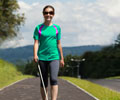A study in the September 27 issue of JAMA says that using antibiotic azithromycin to treat trachoma in Vietnam had increased the risk of reinfections. Trachoma is an infectious disease where scar tissue forms underneath the eyelid. In 1995 the WHO reported that 15 percent of all blindness was caused by trachoma. This was the second biggest cause of blindness after cataract.
At that time, the WHO estimated that 146 million individuals were in need of treatment for active trachoma to prevent blindness, 10 million were in need of surgery for trachomatous trichiasis (eyelash[es] touching the eye), and 8 million were already blind, according to background information in the article.In 1996, the WHO designed the SAFE (Surgery for trachomatous trichiasis; Antibiotics for Chlamydia trachomatis (a type of Chlamydia that causes trachoma); Facial cleanliness; and Environmental improvement) strategy with the goal of elimination of blinding trachoma by the year 2020. For the antibiotic arm of the SAFE strategy, the WHO has recommended antibiotic treatment with either topical tetracycline or oral azithromycin for certain categories of patients with active trachoma. Oral azithromycin has become the drug of choice for the SAFE programs because of difficulties concerning administration and adherence with topical tetracycline eye ointment. Despite a number of studies, there has been a lack of sufficient follow-up beyond the final treatment point to determine rates of recurrence of disease and infection and the risk factors that may contribute to each.
Berna Atik, M.D., M.P.H., of Children's Hospital Oakland Research Institute, Oakland, Calif., and colleagues evaluated the effect of targeted oral azithromycin treatment of school age children and their household members in Vietnam on active trachoma and C trachomatis infection rates. Vietnam is 1 of 16 priority countries in which the SAFE program has been launched. Three communes, which included 3,186 individuals, were randomly selected in Vietnam for the study that was conducted from November 2000 through November 2003. Azithromycin was given to children from 5 through 15 years of age with active trachoma and their household members in SAFE and SA communes at baseline and 12 months over 2 consecutive years with follow-up for 2 years beyond the last treatment. These communes were compared with a S-only control commune that did not receive azithromycin targeted treatment.
The researchers found that re-infection rates increased significantly between 12 and 36 months for SAFE (from 1.6 to 29.3 per 1,000) and SA (5.1 to 25.3 per 1,000) communes but not for the S-only commune (13.4 to 6.7 per 1,000) after 24 months. Compared with the S-only commune, analysis showed that re-infection risk was about four times higher for SAFE and SA communes at 36 months.
"Collectively, the data are consistent with the hypothesis that systemic azithromycin treatment may interrupt the duration of infection, interfering with host immune responses and, thereby, increase the number of individuals who are susceptible to C trachomatis re-infection. … The strategy of targeting only active trachoma for treatment is likely to be ineffective for long-term trachoma control and may adversely affect disease prevalence over time. While the 'F' and 'E' components of the SAFE program will need to be evaluated for their efficacy in decreasing rates of active trachoma and infection, a vaccine will likely be needed for long-term control," the authors write.
Source-Eurekalert
RAS








